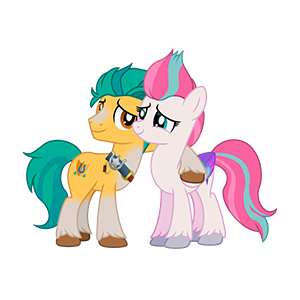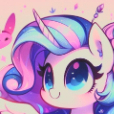Understanding Bisexuality: History, Significance, Representation, and Resources
Introduction
Bisexuality is a significant and often misunderstood sexual orientation, defined by romantic, emotional, and/or sexual attraction to more than one gender. It's not just about understanding a label; it's about recognizing the richness, diversity, and challenges that come with being bisexual. Despite being a common orientation, bisexuality is frequently overshadowed by misconceptions and stereotypes. This comprehensive guide explores what bisexuality is, its historical and contemporary importance, the meaning behind the bisexual flag, representation in media, common misconceptions, comparisons with pansexuality, and valuable resources for further understanding and support.
What is Bisexuality?
Bisexuality refers to the capacity for attraction to more than one gender. Traditionally, bisexuality was understood as attraction to both men and women, but this definition has evolved. Today, bisexuality is recognized as a broad and inclusive identity, encompassing attraction to people of any gender, including non-binary, genderqueer, and gender-fluid individuals. Bisexuality is not about equal attraction to all genders but rather the potential for attraction to more than one gender.
The Importance of Bisexuality: Historical and Contemporary Perspectives
Throughout history, bisexuality has existed across various cultures, often in ways that challenge modern understandings of sexuality. Ancient Greek and Roman societies, for example, recognized same-sex relationships alongside heterosexual ones, though these relationships were often shaped by different social norms than those we recognize today.
In the 20th century, bisexuality began to gain more visibility, particularly during the sexual revolution and the rise of the LGBTQ+ rights movement. Figures like David Bowie and Freddie Mercury, who openly expressed their attraction to multiple genders, became cultural icons, contributing to the broader acceptance of bisexuality.
Today, bisexuality remains a vital part of the LGBTQ+ community. However, bisexual individuals often face unique challenges, including bi-erasure (the denial or invalidation of bisexuality) and bi-phobia (prejudice against bisexual people). These challenges can come from both outside and within the LGBTQ+ community, making it all the more important to recognize and affirm bisexuality as a legitimate and enduring sexual orientation.
The Bisexual Flag: Colors and Their Meanings
The bisexual pride flag was designed by Michael Page in 1998 to give the bisexual community its own symbol, separate from the rainbow flag. The flag consists of three horizontal stripes:
- Pink (Top Stripe): Represents attraction to the same gender.
- Blue (Bottom Stripe): Represents attraction to a different gender.
- Purple (Middle Stripe): Represents the overlap and attraction to multiple genders, symbolizing the fluidity and inclusiveness of bisexuality.
The flag is a powerful symbol of bisexual identity, offering visibility and pride to those who identify as bisexual and serving as a reminder that bisexuality encompasses a wide range of experiences and attractions.
Representation of Bisexuality in Books, Television, Film, and Animation
Representation matters, and bisexuality has gradually become more visible in literature, film, television, and animation. Below are some notable examples of bisexual representation across these mediums:
Books:
- "Call Me By Your Name" by André Aciman: A novel exploring the intense summer romance between Elio and Oliver, both of whom exhibit bisexual behavior.
- "The Color Purple" by Alice Walker: The protagonist Celie experiences relationships with both men and women, highlighting bisexuality in a historical context.
- "Tipping the Velvet" by Sarah Waters: A historical novel that explores the life of a young woman discovering her sexuality, including her attraction to multiple genders.
- "Orlando" by Virginia Woolf: A classic that plays with gender and attraction across centuries, depicting fluid sexuality.
- "Carry On" by Rainbow Rowell: A modern fantasy novel where the protagonist Simon Snow is revealed to be bisexual, navigating relationships with both male and female characters.
Television and Film:
- David Rose in Schitt’s Creek: David’s open bisexuality is portrayed as just one aspect of his character, celebrated for its authenticity and normalization of bisexuality.
- Callie Torres in Grey’s Anatomy: Callie’s bisexuality is depicted with depth and complexity, exploring the challenges and joys of being a bisexual woman.
- Oberyn Martell in Game of Thrones: Oberyn’s bisexuality is portrayed as an integral part of his character, challenging traditional notions of masculinity and sexuality.
- Sara Lance in Arrow and Legends of Tomorrow: Sara’s bisexuality is openly acknowledged, and her relationships with both men and women are given equal importance.
- Piper Chapman in Orange is the New Black: Piper’s bisexuality is explored throughout the series, highlighting her relationships with both male and female partners.
Animated Series:
- Korra in The Legend of Korra: Korra’s relationship with Asami in the final season represents a significant moment in bisexual representation in animated series.
- Princess Bubblegum and Marceline in Adventure Time: Their relationship is confirmed in later episodes, providing positive representation of bisexuality in animation.
- Luz Noceda in The Owl House: Luz's relationship with Amity is a heartwarming and important portrayal of a young bisexual character in a fantasy world, offering representation for younger audiences.
- Harley Quinn in Harley Quinn (animated series): The show explores Harley’s bisexuality, particularly her relationship with Poison Ivy.
- Oscar François de Jarjayes in The Rose of Versailles: Oscar is a complex character who defies gender norms, dressing and living as a man while experiencing deep emotional connections and attraction to both men and women. Her portrayal as a bisexual character in a historical anime offers nuanced representation, highlighting the fluidity and depth of her sexual orientation.
Music, Artists, and Actors:
- Lady Gaga: Open about her bisexuality, Lady Gaga has used her platform to advocate for LGBTQ+ rights, bringing bisexuality into the mainstream conversation.
- Frank Ocean: His music explores themes of bisexuality and fluidity, offering representation in a genre where LGBTQ+ voices have historically been marginalized.
- Megan Fox: The actress has openly discussed her bisexuality, challenging stereotypes and advocating for bi visibility in Hollywood.
- Billie Joe Armstrong (Green Day): The Green Day frontman has been open about his bisexuality, using his platform to challenge norms and support LGBTQ+ rights.
Common Questions and Misconceptions About Bisexuality
Understanding bisexuality also means addressing common questions and misconceptions that often arise. Here are 15 such questions, along with explanations:
-
Isn't bisexuality just a phase?
- Bisexuality is a legitimate sexual orientation, not a temporary stage. People who identify as bisexual can have enduring attractions to more than one gender throughout their lives.
-
Aren't bisexual people just confused or indecisive?
- Bisexuality does not imply confusion or indecisiveness. It simply means that a person is capable of being attracted to more than one gender.
-
Do bisexual people need to have equal attraction to all genders?
- No, bisexuality doesn't require equal attraction to all genders. Attraction can vary in intensity.
-
If a bisexual person is in a relationship with one gender, does that make them straight or gay?
- A bisexual person's orientation doesn't change based on their relationship. They remain bisexual regardless of their partner’s gender.
-
Is bisexuality just a way to avoid coming out as gay?
- Bisexuality is not a "stepping stone" to being gay. For many, bisexuality is their true and permanent orientation.
-
Do bisexual people have more partners or are they more promiscuous?
- The stereotype that bisexual people are more promiscuous is unfounded. Bisexual individuals, like people of any orientation, have diverse relationship and sexual behaviors.
-
Can bisexual people be monogamous?
- Yes, many bisexual people are in monogamous relationships. Bisexuality is about the potential for attraction, not behavior.
-
Is bisexuality just about being attracted to men and women?
- Bisexuality can include attraction to more than two genders, including non-binary and genderqueer individuals.
-
Do bisexual people have to come out twice?
- Coming out as bisexual can involve explaining bisexuality to both straight and LGBTQ+ communities, which can be challenging.
-
Can bisexuality be "cured"?
- Bisexuality, like all sexual orientations, is not a disorder. Attempts to change someone's sexual orientation are harmful and discredited.
- Are bisexual people more likely to cheat?
- There's no evidence to suggest bisexual people are more likely to cheat. Cheating is about individual behavior, not sexual orientation.
- Is bisexuality just a trend or something influenced by media?
- Bisexuality is not a trend. It has existed throughout history across different cultures.
- Do bisexual people face discrimination?
- Yes, bisexual individuals often face discrimination from both the heterosexual and LGBTQ+ communities.
- Can bisexuality change over time?
- While sexual orientation is generally stable, some may experience shifts in how they identify over time. This doesn’t invalidate bisexuality.
- Is it necessary to disclose one's bisexuality to everyone?
- Coming out is a personal choice, and not everyone may feel comfortable disclosing their bisexuality in every context.
Bisexuality vs. Pansexuality: Understanding the Differences and Overlaps
Bisexuality and pansexuality are both sexual orientations that describe attraction to multiple genders, but they have different nuances:
-
Bisexuality: Traditionally understood as attraction to both men and women, but now more broadly defined as attraction to more than one gender, including non-binary individuals. Bisexuality acknowledges gender as a factor in attraction but doesn't require equal attraction to all genders.
-
Pansexuality: Defined as attraction to people regardless of gender, pansexuality emphasizes that gender does not play a role in their attraction. Pansexuality is often seen as more explicitly inclusive of non-binary and genderqueer individuals.
While some people identify as both bisexual and pansexual, others may choose one label over the other depending on how they understand and experience their attraction. Both orientations contribute to the rich diversity of human sexuality, and both challenge traditional, binary understandings of gender and attraction.
Resources for Understanding and Supporting Bisexuality
Understanding and supporting bisexuality involves more than just knowledge; it also requires access to resources that can provide further education, support, and community. Here are some valuable resources:
-
Bisexual Resource Center (BRC): The BRC is one of the oldest organizations dedicated to supporting the bisexual community. They offer educational materials, support groups, and advocacy for bisexual visibility.
-
GLAAD: While GLAAD supports the entire LGBTQ+ community, they have specific initiatives and resources focused on bisexual visibility and issues.
-
Trevor Project: The Trevor Project offers crisis intervention and suicide prevention services to LGBTQ+ youth, including those who identify as bisexual.
-
Books: Reading books by and about bisexual individuals can provide deeper insight and representation. Some notable titles include "Bi: Notes for a Bisexual Revolution" by Shiri Eisner and "Getting Bi: Voices of Bisexuals Around the World" by Robyn Ochs and Sarah E. Rowley.
-
Online Communities: Websites and forums like Reddit’s r/bisexual and Bi.org offer spaces for bisexual individuals to connect, share experiences, and find support.
Conclusion
Bisexuality is a valid and important sexual orientation that has existed throughout history and continues to play a crucial role in the LGBTQ+ community. Understanding bisexuality involves recognizing its complexity, challenging common misconceptions, and advocating for visibility and acceptance. Through representation in media, education, and support, we can help create a world where bisexuality is fully understood and embraced. Whether you're bisexual yourself, an ally, or simply someone interested in learning more, the journey toward understanding bisexuality is one that enriches our collective knowledge and empathy.
-
 5
5
-
 1
1
-
 1
1




4 Comments
Recommended Comments
Create an account or sign in to comment
You need to be a member in order to leave a comment
Create an account
Sign up for a new account in our community. It's easy!
Join the herd!Sign in
Already have an account? Sign in here.
Sign In Now